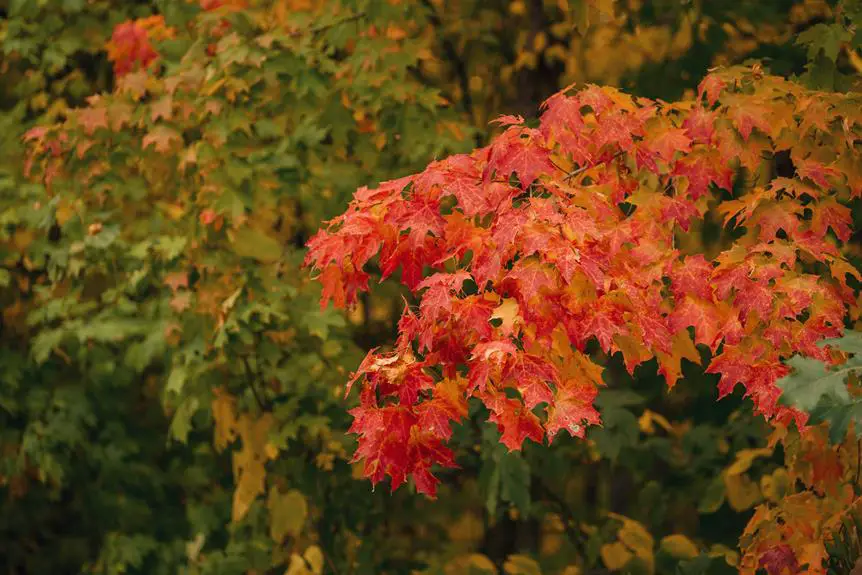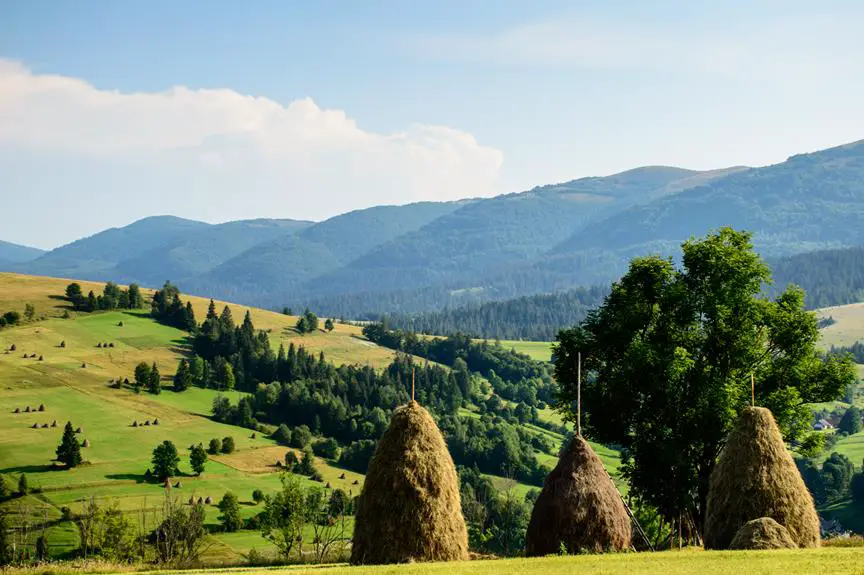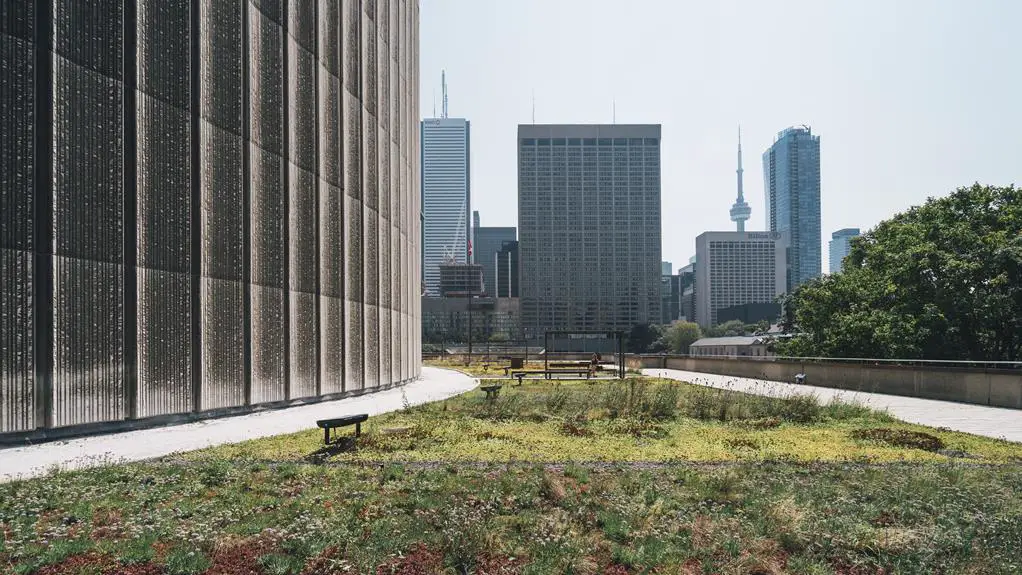In the enchanting world of landscaping, the redbud tree stands as a symbol of beauty and grace. With its vibrant blooms and delicate leaves, it captivates the hearts of many.
However, like every other living being, the redbud tree has its own set of pros and cons. From its aesthetic appeal and low maintenance requirements to its susceptibility to diseases and pests, this article aims to explore the various aspects of growing and caring for redbud trees.
Key Takeaways
- Ornamental value
- Compact size suitable for smaller landscapes
- Low-maintenance option
- Resistant to common pests and diseases
Aesthetic Appeal
Redbud trees frequently add a touch of beauty to any landscape with their vibrant pink and purple blossoms. These stunning flowers bloom in early spring, creating a burst of color that can instantly transform a dull or ordinary scenery into a picturesque view. The delicate petals of the redbud flowers stand out against the backdrop of green leaves, creating a striking contrast that catches the eye of anyone passing by. Whether planted in a front yard, lining a driveway, or dotting a park, these trees have the power to enhance the aesthetic appeal of any outdoor space.
Beyond their visual appeal, redbud trees also offer a unique charm with their heart-shaped leaves. These leaves, which emerge after the blossoms have faded, add a touch of elegance and grace to the tree's overall appearance. As the leaves mature, they create a dense canopy that provides shade during the hot summer months, making redbud trees not only visually appealing but also functional in creating a comfortable outdoor environment.
Moreover, the beauty of redbud trees extends beyond their appearance. The blossoms of these trees attract various species of bees, butterflies, and birds, adding a touch of liveliness and activity to the surrounding area. The buzzing of bees and the fluttering of wings create a soothing ambiance that enhances the overall experience of being in the presence of these trees.
Flowering Period
During the spring season, redbud trees bloom for approximately two to three weeks, showcasing their beautiful pink and purple flowers. This period of blossoming is eagerly awaited by nature enthusiasts and homeowners alike, as it adds a burst of color and beauty to the landscape.
The flowering period of redbud trees offers several advantages and a few drawbacks as well:
- Visual Delight: The vibrant pink and purple flowers of redbud trees create a stunning visual display, transforming any garden or park into a mesmerizing sight.
- Pollinator Attraction: The flowers of redbud trees act as magnets for bees, butterflies, and other pollinators, making them a valuable addition to any ecosystem.
- Limited Duration: While the flowering period of redbud trees is undoubtedly enchanting, it's relatively short-lived. The blossoms typically last for only a couple of weeks, leaving behind a carpet of fallen petals.
Despite the brevity of their flowering period, redbud trees continue to be a popular choice among gardeners and landscapers. Their captivating blooms make a significant impact during the spring season, ensuring that their beauty is cherished and appreciated by all who witness it.
Low Maintenance Requirements
Caring for redbud trees is relatively straightforward as they require minimal upkeep. Redbuds are known for their resilience and ability to thrive in various soil conditions, making them an ideal choice for low maintenance gardens and landscapes. Here is a table summarizing the low maintenance requirements of redbud trees:
| Maintenance Requirement | Description |
|---|---|
| Watering | Redbuds have moderate water needs and should be watered regularly, especially during dry periods. However, they are drought-tolerant and can withstand short periods of water scarcity. |
| Pruning | Minimal pruning is required for redbud trees. It is recommended to remove any dead or damaged branches and to shape the tree during the dormant season. Avoid heavy pruning as it can affect the tree's natural form and reduce flowering. |
| Fertilizing | Redbuds generally do not require regular fertilization. However, applying a slow-release, balanced fertilizer in early spring can help promote healthier growth and enhance flowering. Avoid over-fertilization as it can lead to excessive foliage growth at the expense of flowers. |
With their low maintenance requirements, redbud trees are a popular choice for homeowners and gardeners looking for beautiful, yet easy-to-care-for trees. By following these simple guidelines, redbuds can thrive and bring beauty to any landscape with minimal effort.
Environmental Benefits
Planting redbud trees in yards and public spaces can provide significant air purification benefits. These beautiful trees act as natural air filters, helping to improve the quality of the environment around them. Here are three ways in which redbud trees contribute to environmental benefits:
- Air purification: Redbud trees absorb harmful pollutants such as carbon dioxide, sulfur dioxide, and nitrogen dioxide from the air through their leaves. Through a process called photosynthesis, they convert these pollutants into oxygen, releasing it back into the atmosphere. This helps to reduce air pollution and create a healthier living environment.
- Habitat for wildlife: Redbud trees provide vital habitat for various species of birds, insects, and small mammals. The branches and foliage of these trees offer shelter, nesting sites, and food sources, supporting biodiversity in urban and suburban areas. By planting redbud trees, individuals can help create a thriving ecosystem and promote the well-being of local wildlife.
- Erosion control: The root systems of redbud trees play a crucial role in preventing soil erosion. Their extensive root networks help stabilize the soil, reducing the risk of landslides and preserving the integrity of the land. This is particularly beneficial in areas prone to erosion, such as sloping landscapes or areas near bodies of water.
Disease Susceptibility
Redbud trees are susceptible to both fungal and bacterial diseases, but with proper care, these issues can be effectively managed. Fungal diseases, such as powdery mildew and canker, can cause leaves to develop white or gray powdery growth and cankers on branches and trunks. Bacterial diseases, such as bacterial leaf scorch and fire blight, can cause wilting, yellowing, and browning of leaves, as well as dieback of branches. These diseases can be detrimental to the health and appearance of redbud trees if not addressed promptly.
To manage disease susceptibility, it is important to practice good cultural care. This includes providing adequate sunlight, water, and nutrients to keep the trees healthy and strong. Regular pruning should be done to remove any infected or dead branches, as well as to promote air circulation and sunlight penetration. It is also recommended to avoid overhead watering, as this can create a humid environment ideal for disease development.
Here is a table summarizing the common diseases that afflict redbud trees and their management strategies:
| Disease | Symptoms | Management |
|---|---|---|
| Powdery mildew | White or gray powdery growth on leaves | Prune infected branches, improve air circulation, apply fungicides if needed |
| Canker | Cankers on branches and trunks | Prune infected branches, improve tree vigor, apply fungicides if needed |
| Bacterial leaf scorch | Wilting, yellowing, and browning of leaves | Maintain tree vigor, prune infected branches, apply bactericides if needed |
| Fire blight | Wilting, blackening, and curling of branches and flowers | Prune infected branches, improve air circulation, apply bactericides if needed |
Pests and Insect Issues
When it comes to pests and insect issues, red bud trees have their fair share of challenges. Effective pest control is essential to keep these trees healthy and thriving.
Common insect infestations include aphids, scale insects, and caterpillars. However, there are also natural repellent options that can be explored to minimize the impact of these pests on red bud trees.
Effective Pest Control
One of the main advantages of red bud trees is that they require minimal pest control measures. These trees are generally resistant to common pests and diseases, making them a low-maintenance option for homeowners and landscapers. However, there are still some pests and insect issues that can affect red bud trees.
Here are a few effective pest control methods to keep in mind:
- Regular inspection: Conduct routine inspections of the trees to identify any signs of pest infestation or insect issues. Look for chewed leaves, wilting foliage, or unusual discoloration.
- Natural predators: Encourage the presence of beneficial insects such as ladybugs and lacewings, which feed on common pests like aphids and caterpillars. Avoid using harsh chemical insecticides that may harm these helpful predators.
- Pruning and sanitation: Remove any dead or diseased branches promptly to prevent pests from spreading. Regularly clean up fallen leaves and debris around the trees to minimize hiding places for pests.
Common Insect Infestations
Despite regular pest control measures, red bud trees can still be susceptible to common insect infestations. These infestations can cause damage to the tree's leaves, flowers, and overall health. Here are some of the most common insect pests that red bud trees may encounter:
| Insect Pest | Damage | Control Measures |
|---|---|---|
| Aphids | Sucking sap from leaves | Insecticidal soap or neem oil sprays |
| Japanese Beetles | Skeletonizing leaves | Handpicking or using insecticides |
| Red Bud Borer | Tunneling into branches | Pruning infested branches |
| Scale Insects | Feeding on plant sap | Horticultural oils or insecticides |
It is important for red bud tree owners to be vigilant and regularly inspect their trees for signs of infestation. Early detection and prompt action can help prevent further damage and ensure the tree's health and longevity.
Natural Repellent Options?
Many gardeners find that using natural repellents can be an effective solution to address pests and insect issues on their red bud trees. These natural repellents not only help in keeping the pests away but also ensure that the tree remains healthy and free from any harmful chemicals.
Here are some natural repellent options that can be used:
- Neem oil: Neem oil is a popular natural repellent that can be sprayed on the red bud tree to repel common pests like aphids, caterpillars, and beetles. It works by disrupting the insects' feeding and reproductive processes.
- Garlic spray: A homemade garlic spray can be a great option to repel pests from red bud trees. The strong smell of garlic acts as a deterrent for insects and pests, keeping them away from the tree.
- Beneficial insects: Encouraging beneficial insects like ladybugs, lacewings, and praying mantises in the garden can help control pest populations naturally. These insects feed on harmful pests, keeping them in check and maintaining a healthy ecosystem around the red bud tree.
Using natural repellents not only helps in protecting the red bud tree from pests and insects but also promotes a sustainable and eco-friendly approach to gardening.
Potential Size and Space Requirements
During the initial planting stage, it's important to consider the potential size and space requirements of redbud trees. Redbuds are known for their compact size and ornamental value, making them suitable for smaller landscapes and urban gardens. However, it is still necessary to provide them with enough space to grow and thrive.
A mature redbud tree can reach a height of 20 to 30 feet and spread out to a width of 25 to 35 feet. Therefore, it is recommended to plant redbuds at least 15 to 20 feet away from buildings, structures, and other trees to allow for proper growth and prevent any potential damage.
To further emphasize the importance of space requirements, consider the following table:
| Aspect | Requirement |
|---|---|
| Height | 20 to 30 feet |
| Width | 25 to 35 feet |
| Distance from | |
| buildings/ | At least 15 to 20 feet |
| structures | |
| Distance from | |
| other trees | At least 15 to 20 feet |
Frequently Asked Questions
How Do Redbud Trees Contribute to the Environment?
Redbud trees contribute to the environment by providing food and shelter for birds, bees, and butterflies. They also help improve air quality by filtering pollutants and reducing erosion with their extensive root systems.
What Are the Common Diseases That Redbud Trees Are Susceptible To?
What diseases do redbud trees get? Are they vulnerable to common ailments?
Are There Any Specific Pests or Insects That Commonly Affect Redbud Trees?
There are some specific pests and insects that commonly affect redbud trees. They can include aphids, caterpillars, and borers. These pests can cause damage to the leaves, flowers, and branches of the tree.
What Is the Average Size of a Mature Redbud Tree and How Much Space Is Needed for It to Grow Properly?
On average, a mature redbud tree can reach a height of 20 to 30 feet and spread 15 to 25 feet wide. It requires ample space for proper growth and should be planted with enough room to accommodate its size.
Do Redbud Trees Require Any Special Care or Maintenance Beyond the Low Maintenance Requirements Mentioned?
Redbud trees do not require any special care or maintenance beyond the low maintenance requirements mentioned. However, regular watering, pruning, and fertilizing can promote healthier growth and enhance the tree's overall appearance.







